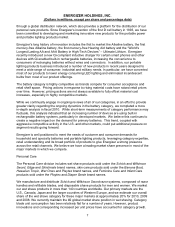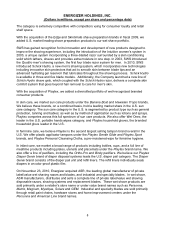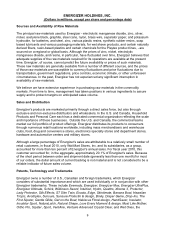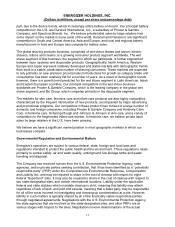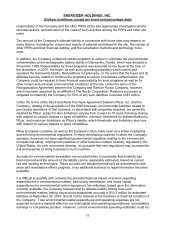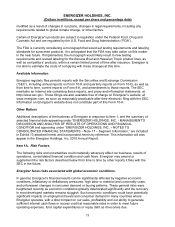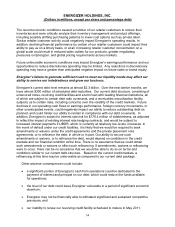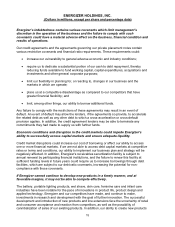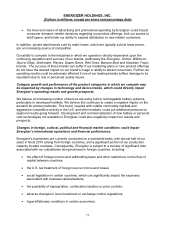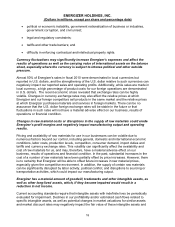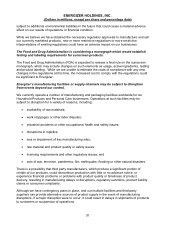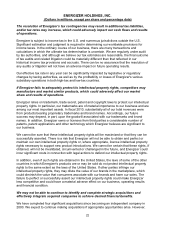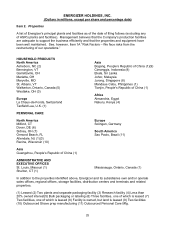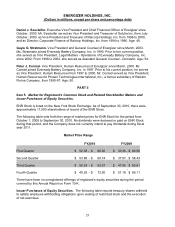Energizer 2010 Annual Report Download - page 27
Download and view the complete annual report
Please find page 27 of the 2010 Energizer annual report below. You can navigate through the pages in the report by either clicking on the pages listed below, or by using the keyword search tool below to find specific information within the annual report.
ENERGIZER HOLDINGS, INC.
(Dollars in millions, except per share and percentage data)
17
• the level and nature of advertising and promotional spending by Energizer could impact
consumer demand, retailer decisions regarding our product offerings, limit our access to
shelf space, and hinder our ability to expand distribution to new retailer customers.
In addition, private label brands sold by retail chains, which are typically sold at lower prices,
are an increasing source of competition.
Our ability to compete in the industries in which we operate is directly dependent upon the
continuing reputation and success of our brands, particularly the Energizer, Schick, Wilkinson
Sword, Edge, Skintimate, Playtex, Diaper Genie, Wet Ones, Banana Boat and Hawaiian Tropic
brands. The success of these brands can suffer if our marketing plans or new product offerings
do not have the desired impact on our brand’s image or ability to attract consumers. Further our
operating results could be adversely affected if one of our leading brands suffers damage to its
reputation due to real or perceived quality issues.
Category growth and performance of the product categories in which we compete may
be impacted by changes in technology and device trends, which could directly impair
Energizer’s operating results and growth prospects.
We believe an increasing number of devices are using built-in rechargeable battery systems,
particularly in developed markets. We believe this continues to create a negative impact on the
demand for primary batteries. This trend, coupled with volatile commodity markets and
aggressive competitive activity in the U.S. and other markets, could put additional pressure on
segment results going forward. Development and commercialization of new battery or personal
care technologies not available to Energizer could also negatively impact our results and
prospects.
Changes in foreign, cultural, political and financial market conditions could impair
Energizer’s international operations and financial performance.
Energizer’s businesses are currently conducted on a worldwide basis, with almost half of our
sales in fiscal 2010 arising from foreign countries, and a significant portion of our production
capacity located overseas. Consequently, Energizer is subject to a number of significant risks
associated with our subsidiaries doing business in foreign countries, including:
• the effect of foreign income and withholding taxes and other restrictions on the flow of
capital between countries;
• the U.S. tax treatment of foreign source income and losses;
• social legislation in certain countries, which can significantly impact the expenses
associated with business rationalizations;
• the possibility of expropriation, confiscatory taxation or price controls;
• adverse changes in local investment or exchange control regulations;
• hyperinflationary conditions in certain economies;


